September

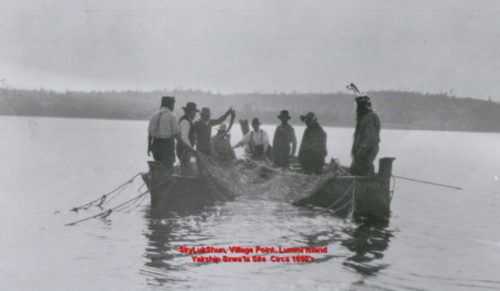
We open our Season of Northwest Native Art Glass with a solo exhibit by Seattle-based glass artist Dan Friday (Lummi Nation). Dan returns to the gallery with blown and hotsculpted works in glass, focusing particularly on the proud resurgence of reefnet fishing amongst the Lummi nation. Reefnet fishing an indigenous fishing practice that is one of the most sustainable and humane in the world, but that was almost completely wiped out in the twentieth century.
In honor of the reclamation of these practices, Dan Friday renders some of the most important tools in reef netting out of glass for his new exhibition. They join other works honoring his Lummi heritage, including woven cedar baskets made from a complex glass mosaic technique; model totem poles in hot-sculpted glass, and others.
Learn more about reefnetting and Dan’s glass by scrolling down the page, past the artwork.
Exhibition Dates:
September 16, 2018 - September 30, 2018Involved Artists:
ARTIST LECTURE: Tuesday, September 18th, 6:30pm at Stonington Gallery. Free to attend.
Featured Works
-
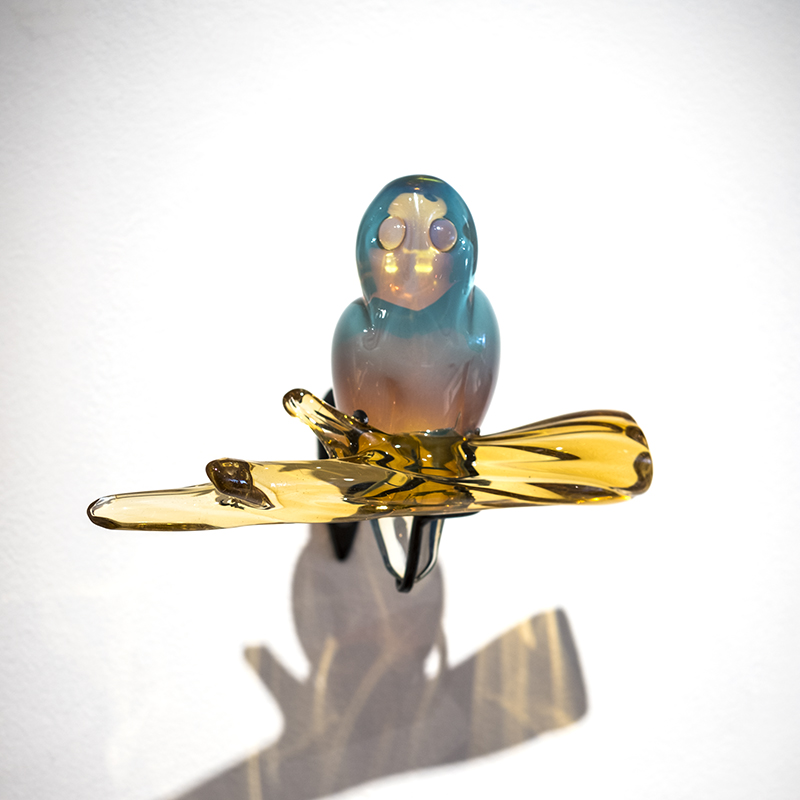 Dan FridayWatcher on the BranchHotsculpted Glass with Silver, Metal Wall Bracket
Dan FridayWatcher on the BranchHotsculpted Glass with Silver, Metal Wall Bracket- 6.75"h
- 8.75"w
- 3"d
SOLD -
 Dan FridaySxwole Reefnet Anchor (Chartreuse) SmallBlown, Hotsculpted, and Sandblasted Glass
Dan FridaySxwole Reefnet Anchor (Chartreuse) SmallBlown, Hotsculpted, and Sandblasted Glass- 8.5"h
- 8.75"w
- 4"d
SOLD -
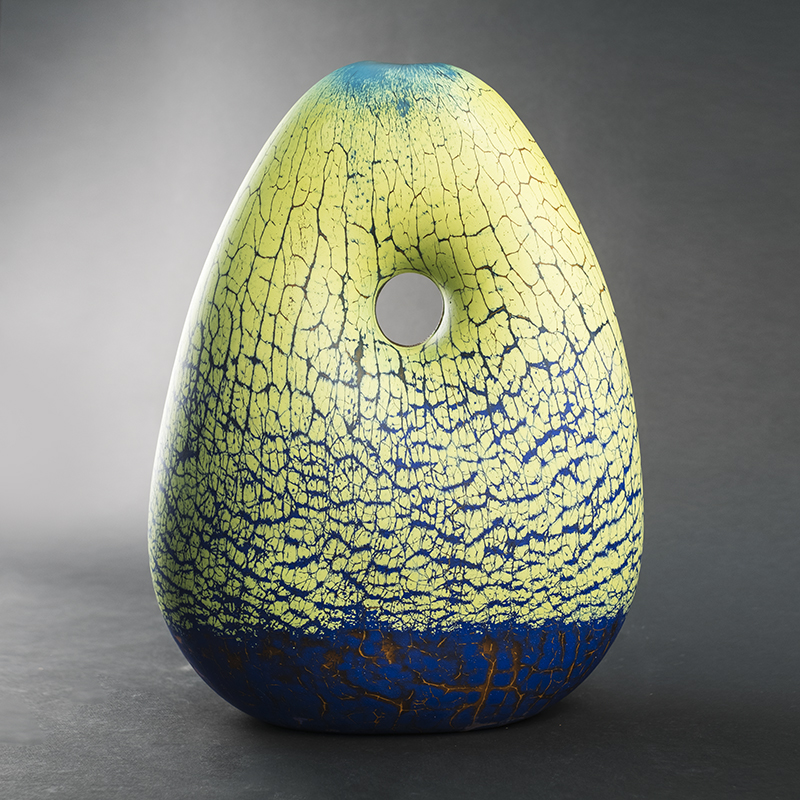 Dan FridaySxwole Reefnet Anchor (Chartreuse) LargeBlown, Hotsculpted and Sandblasted Glass
Dan FridaySxwole Reefnet Anchor (Chartreuse) LargeBlown, Hotsculpted and Sandblasted Glass- 15"h
- 12"w
- 5"d
SOLD -
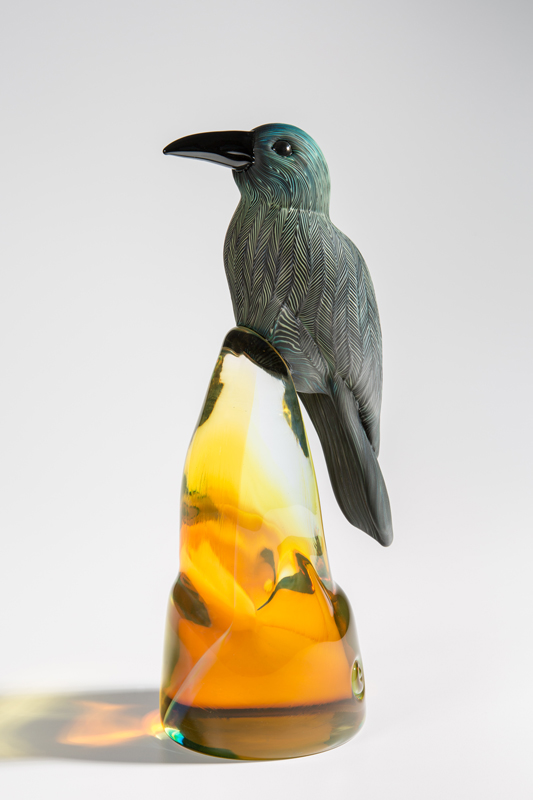 Dan FridayWatcher TotemHotsculpted Glass with Cane
Dan FridayWatcher TotemHotsculpted Glass with Cane- 14"h
- 5"w
- 7"d
SOLD -
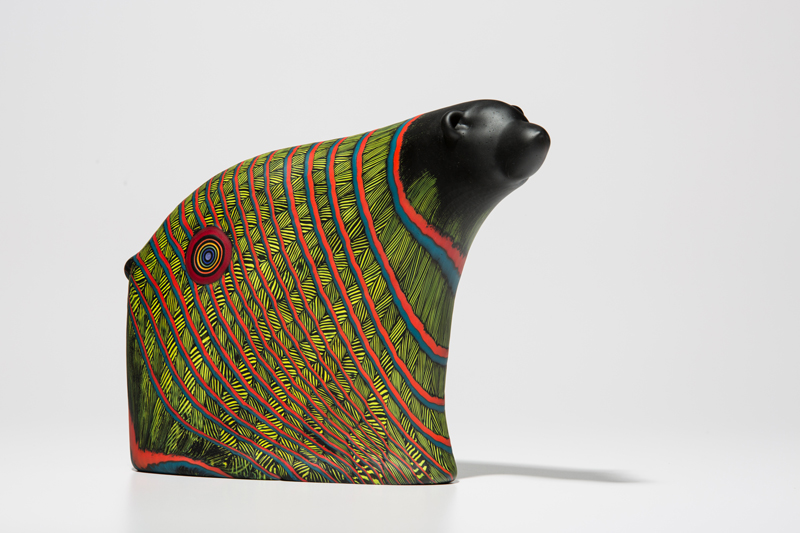 Dan FridayLummi Lightning BearHotsculpted Glass and Sandblasted Glass with Murrine and Cane
Dan FridayLummi Lightning BearHotsculpted Glass and Sandblasted Glass with Murrine and Cane- 8.75"h
- 12"w
- 3"d
SOLD -
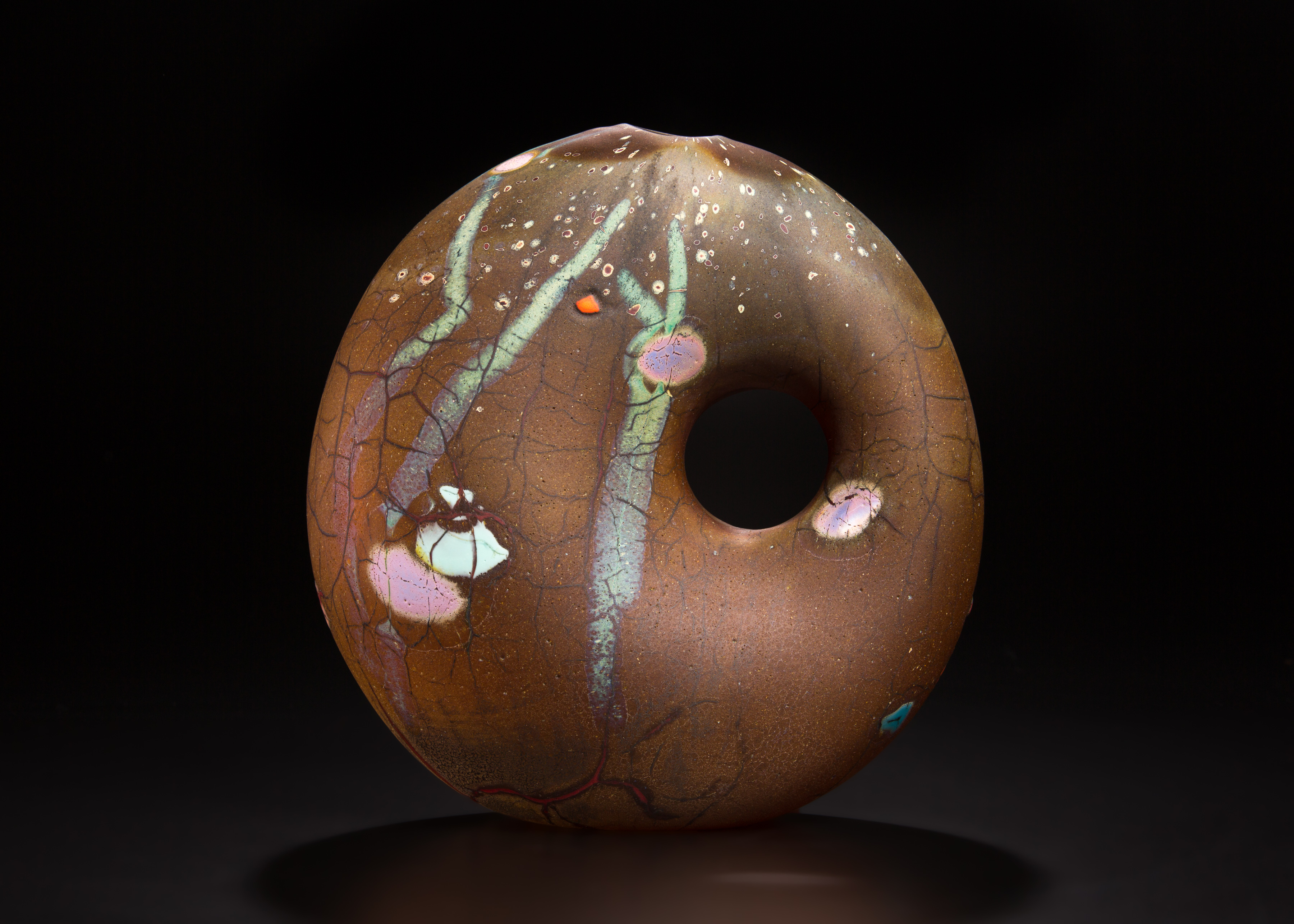 Dan FridaySxwole Reefnet Anchor (Earth-Toned) – SmallBlown, Hotsculpted and Sandblasted Glass
Dan FridaySxwole Reefnet Anchor (Earth-Toned) – SmallBlown, Hotsculpted and Sandblasted Glass- 9.5"h
- 8.5"w
- 3.75"d
SOLD -
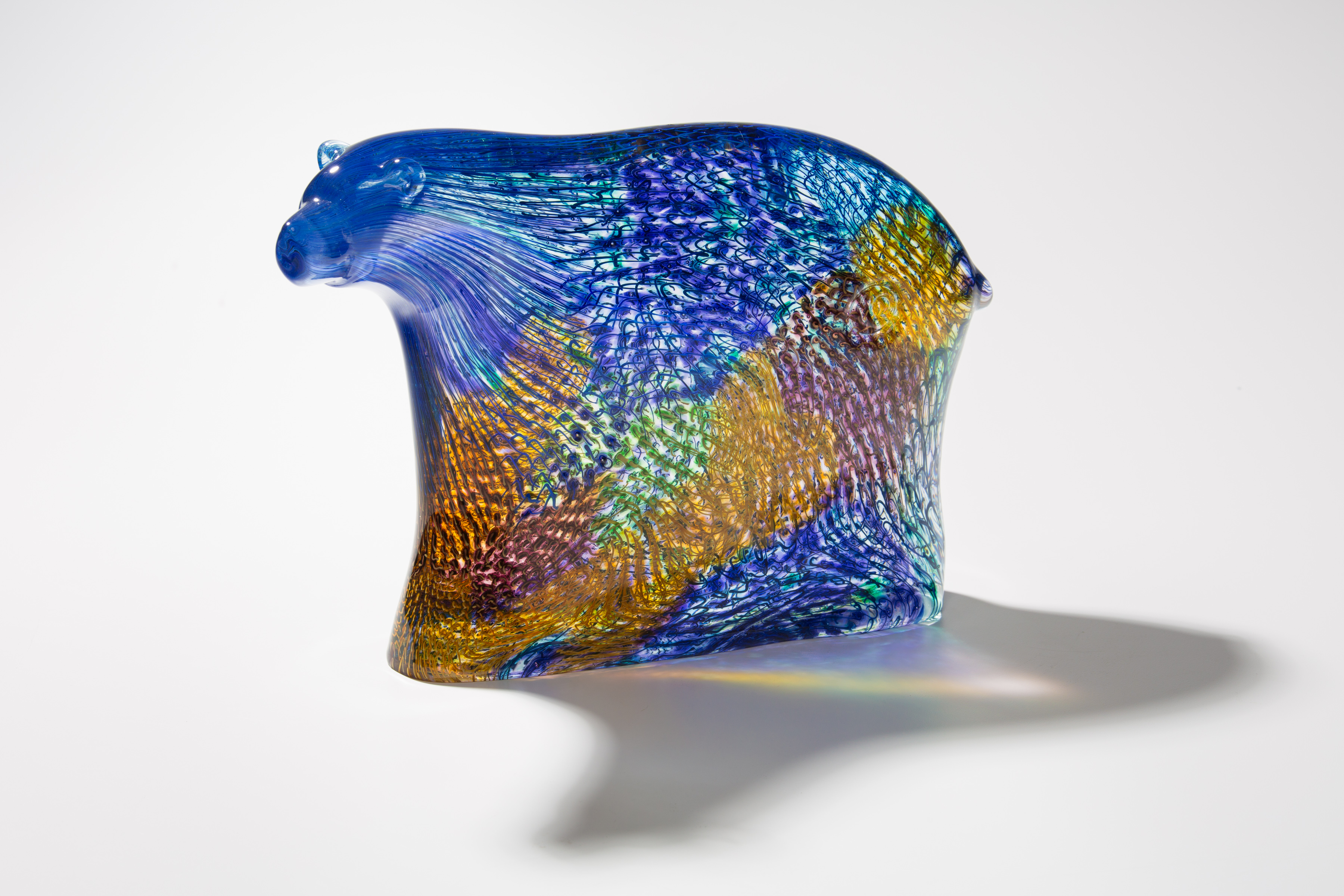 Dan FridayTempera BearHotsculpted Glass with Thread Murrini
Dan FridayTempera BearHotsculpted Glass with Thread Murrini- 8.88"h
- 13"w
- 2"d
SOLD -
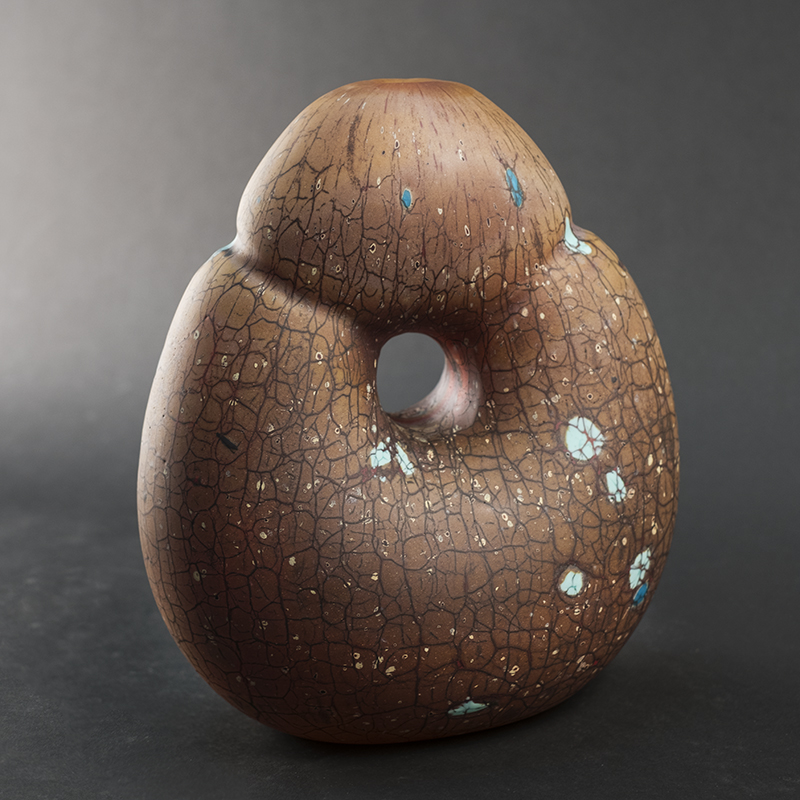 Dan FridaySxwole Reefnet Anchor (Earth-Toned) MediumBlown, Hotsculpted and Sandblasted Glass
Dan FridaySxwole Reefnet Anchor (Earth-Toned) MediumBlown, Hotsculpted and Sandblasted Glass- 9.75"h
- 8.5"w
- 3.75"d
SOLD -
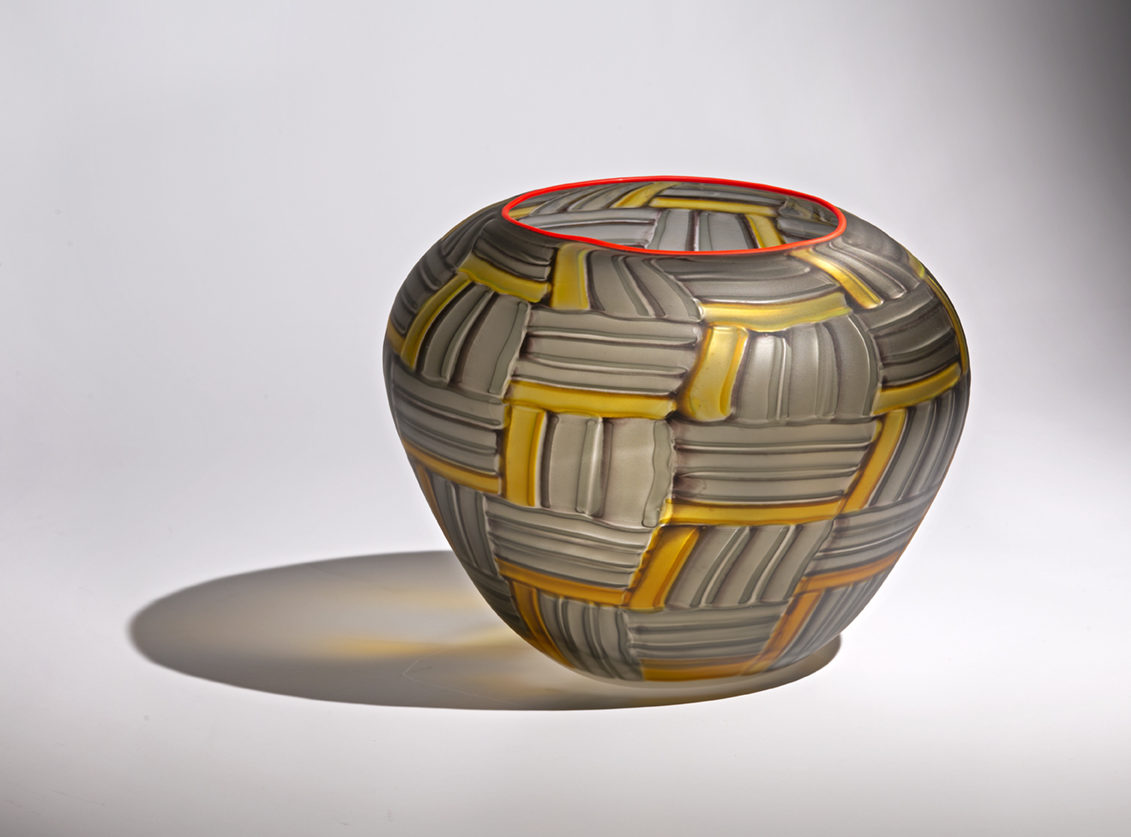 Dan FridaySmoke BasketBlown, Sandblasted, Woven Mosaic Cane Glass
Dan FridaySmoke BasketBlown, Sandblasted, Woven Mosaic Cane Glass- 8.5"h
- 11"w
- 11"d
SOLD -
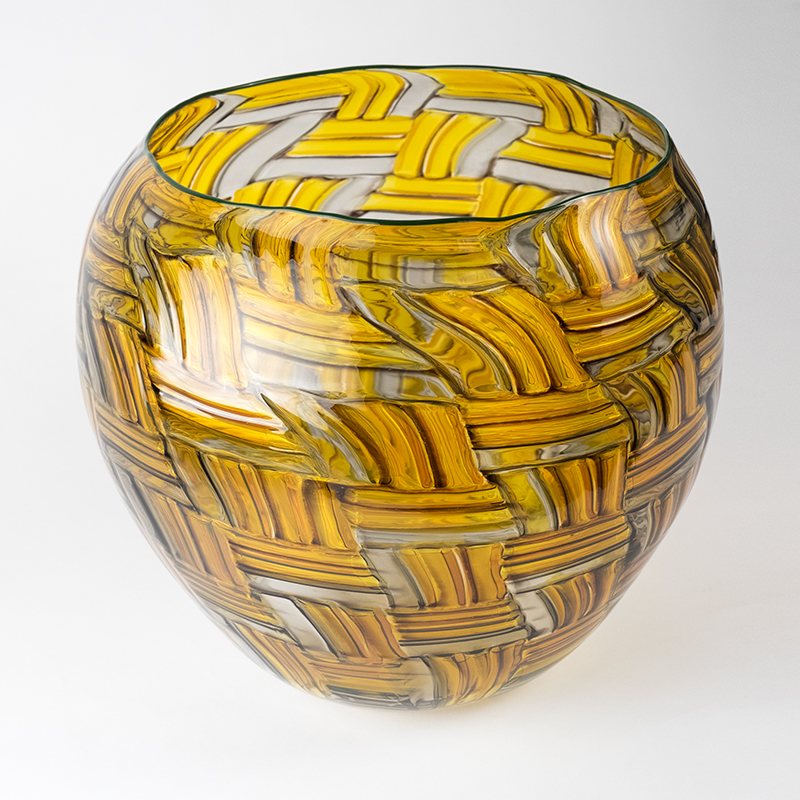 Dan FridayLightning BasketBlown and Woven Cane Mosaic Glass
Dan FridayLightning BasketBlown and Woven Cane Mosaic Glass- 12.5"h
- 12"w
- 12"d
SOLD -
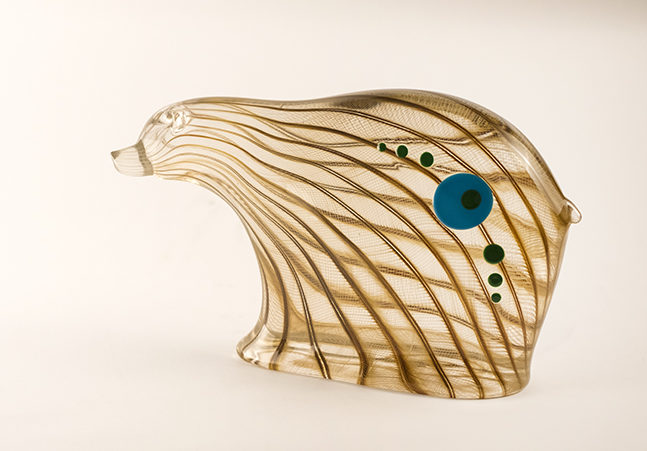 Dan FridayWoven Cedar BearWoven Cane Glass using Zanfirico Technique
Dan FridayWoven Cedar BearWoven Cane Glass using Zanfirico Technique- 8"h
- 11.5"w
- 4"d
SOLD -
 Dan FridayCoast Salish Wolf CombHotsculpted Glass and Sandblasted Glass on Metal Wall Hanger
Dan FridayCoast Salish Wolf CombHotsculpted Glass and Sandblasted Glass on Metal Wall Hanger- 12"h
- 5"w
- 3"d
SOLD
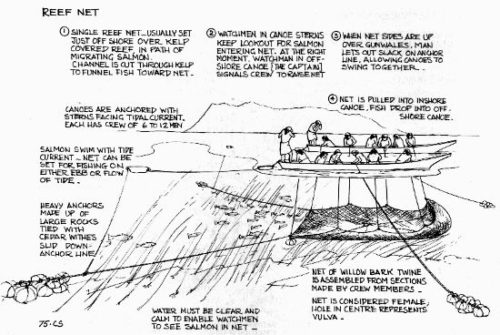
Reefnetting was spread amongst the tribes around the Salish Sea but was invented by the Lummi. Reefnet fishing was traditionally done by suspending a a sxwole (woven reef net) between two canoes. The ancient reef net, made of the inner bark of cedar, willow saplings, and sometimes nettles, was laid underwater near bottom, and sloped towards the surface. Fishers attached the net to anchors at the upstream end of the surging tide and to the canoes at the other end.
They anchored their canoes at the downstream end and spread the net. Fish would swim along the bottom, through a path created in kelp, constrained to the sides by reefs and/or islands. On meeting the trellis-like structure, which would be strung with sea grass to create a false bottom, the fish would be gently nudged up to the net proper. When spotters observed salmon swimming into the net, they released the canoes from their anchors and they swung together. Meanwhile, the downstream end of the net was pulled in, followed by the upstream side to trap the fish inside.
Once practiced throughout the San Juan Islands, reefnetting now exists only off Lummi Island, and three of the other San Juan Islands. Legislation by the Washington State government in the 1890s banned reef netting within 2400 feet of a fish trap (which were all white-owned), and this effectively banned reefnetting entirely. This devastated the livelihoods of Native families and almost wiped out the practice. The Lummi were pushed out of the islands and onto a reservation outside of Bellingham. Industrial fish–trap operations took over their reef net sites and many Lummi got work in the salmon canneries. A 1934 ban on fish traps in Puget Sound gave tribal fishermen renewed access to their traditional sites, but were crowded out by competition from non-Indian fishermen who were able to reef net in more profitable locations.
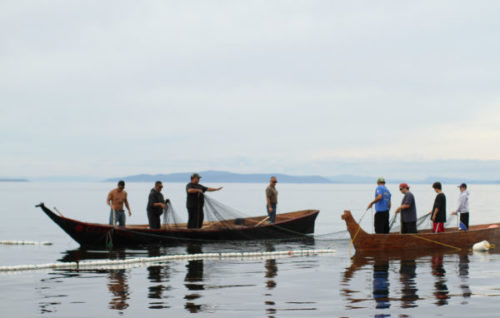
Traditional reefnetting has reappeared in a small but significant way, with the Lummi Nation holding their first traditional reefnetting at Cherry Point in 2013 in modern history. Tribal members carved the canoes and wove the nets by hand.
“A sxwole (reef net) is a gift from our creator, therefore an inherent right,” said Lummi tribal cultural adiminstrative policy assistant Al Scott Johnnie in 2013. “The sockeye salmon spirit came to our people and showed them how to make the reef net from the willow and other materials that were used from long ago. This was a way of life for our people, and the method was also to allow our sockeye to go up into the river so they could replenish, because they were our extended family.”
Learn how Dan Friday creates his iconic glass mosaic baskets in this excellent video by Derek Klein:
https://www.instagram.com/p/BeqwpAonxWY/?taken-by=danfriday
Dan Friday is a member of the Lummi Nation and a Seattle-based glass artist. He has spent the last twenty years working for artists such as Dale Chihuly, Paul Marioni, Preston Singletary, and many others. Dan has also taught at the Pilchuck School of Glass. He has had residencies at the Museum of Glass in Tacoma, WA, and the Dream Community in Tai Pei, Taiwan.Dan is a recipient of the Discovery Fellowship through the Southwestern Association for Indian Arts, and was awarded a research residency at the Burke Museum of Natural History and Culture to study his family’s historic legacy. His work can be seen in galleries across the United States.
